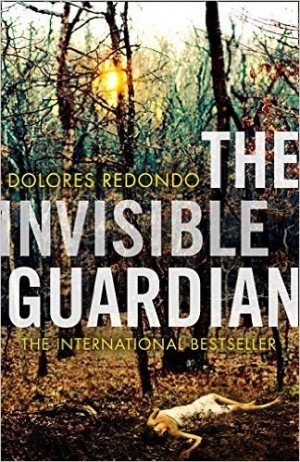
Inspector Amaia Salazar is called to investigate a possible serial killer case on her home turf, the village of Elizondo in the Baztan valley. Young girls are being killed in the forest, apparently following a macabre purification rite, with a sticky patisserie cake displayed on their bodies and their shoes carefully placed by the side of the road. The press and local population are quick to claim this is the work of the Basajaun, the Spirit of the Forest according to Basque myths, but Amaia herself is sceptical of any paranormal explanations. The Basajaun, as she knows from her own childhood, is supposed to be a guardian and protector of wildlife. She believes the answer lies somewhere in this inward-looking, isolated community that she previously tried so hard to escape.
Salazar not only has to face the suspicion and taciturnity of her neighbours, she also has to confront her own family’s legacy in the region. Her older sister Flora has taken over the family business but is bitter and resentful, while her younger sister’s marriage to a good-for-nothing husband is breaking down. Despite her own husband’s tender support and her aunt’s warm welcome, family drama and bad memories plague Amaia and nearly derail the investigation.
The setting emerges as a very strong additional character in the book. The untamed forest, the narrow valley with its 200 days of rain per year, but above all a region of hardy mountain folk, with a unique blend of pagan traditions and Catholic ideology. This extends especially to the contradictory roles of women and motherhood is a strong theme throughout the book. Amaia is happily married but unable to conceive, while other women in the book struggle with the expectations being placed on them as wives and mothers. In spite of the old-fashioned attitude towards women that Amaia encounters in the village, there is much proof of female solidarity and strength in the book as well. I have the feeling that the women in Amaia’s family will continue to play an important role in the next books in the series.
Amaia Salazar is a gutsy young detective, more thoughtful and considerate than some of her Anglo-Saxon counterparts. Her childhood traumas are revealed gradually, without detracting from the investigation. On the contrary, they help to explain why she takes the investigation so personally. She almost identifies with the young victims and is repulsed by some of the nasty gossip she hears about them.
In this debut novel, there are some instances of obvious plotting, such as the standard conflict in the investigative team with a colleague who feels unjustly sidetracked. Keen crime readers will also find the secondary male characters, including Amaia’s American sculptor husband, a bit two-dimensional.
However, this is a well-written book for those eager to explore a little-known area of Spain, and should appeal to fans of Fred Vargas and James Oswald. The supernatural elements are handled with a light touch, and shouldn’t put off more cynical readers.The book is the first in a trilogy which has been translated into 22 languages and has sold very well across Europe.
HarperCollins
Print/Kindle/iBook
£6.89
CFL Rating: 4 Stars